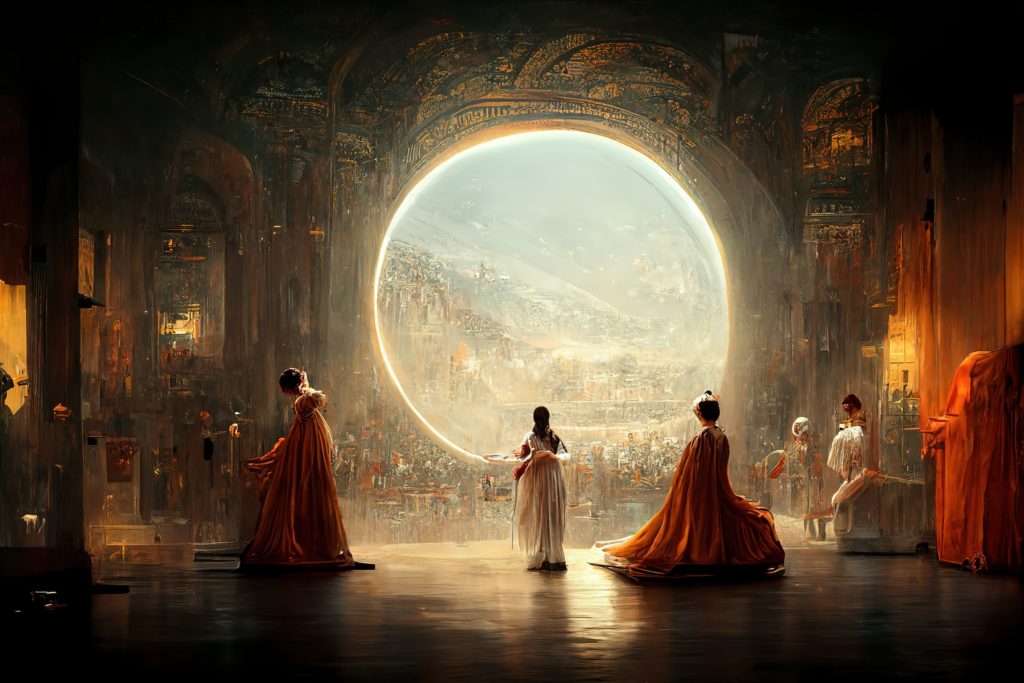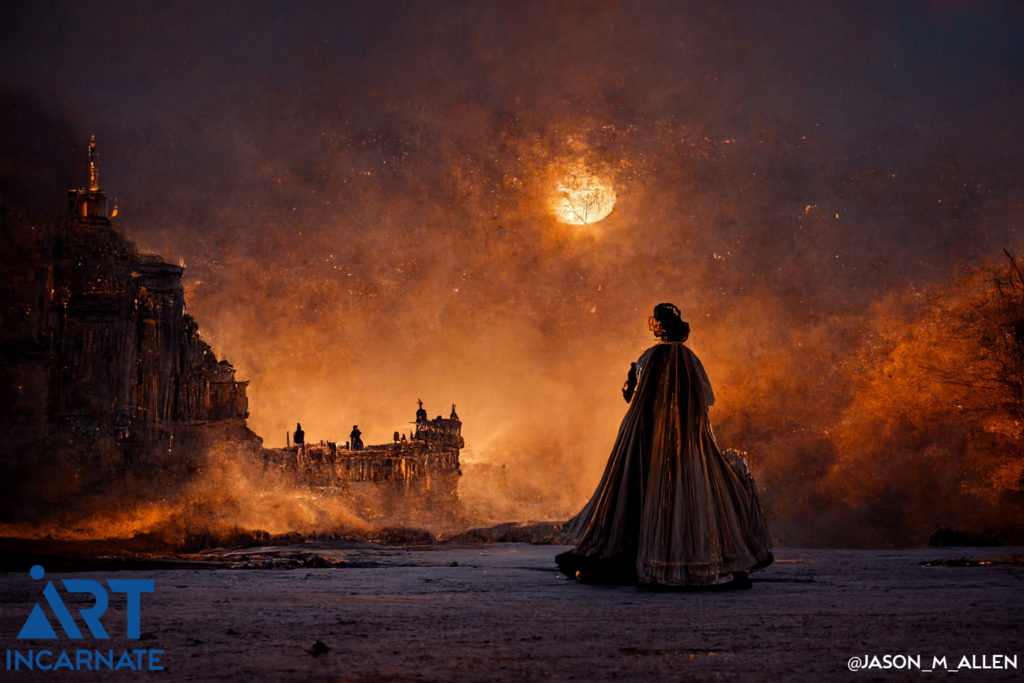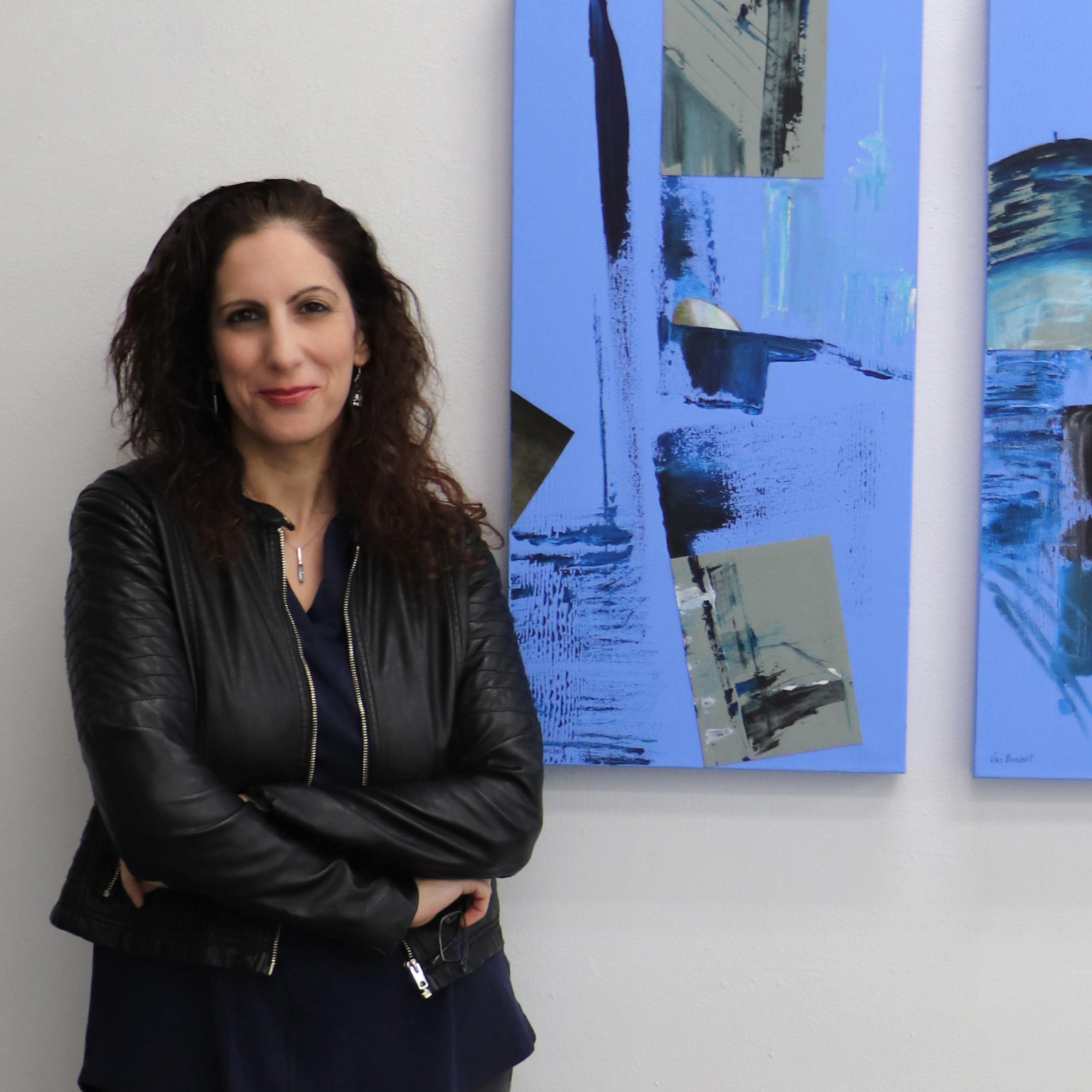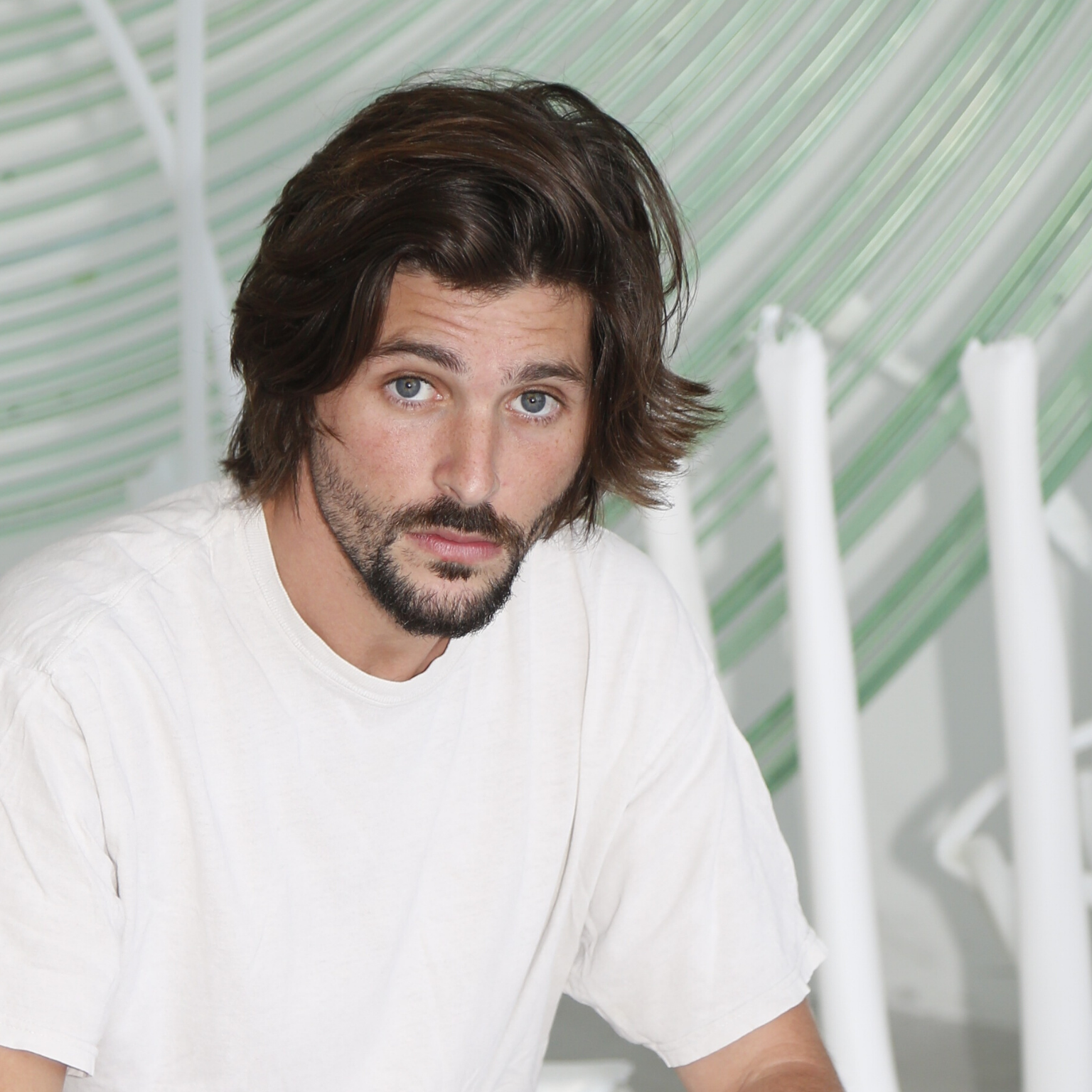Jason M. Allen, artist and Lead Game Designer / Art Director at Incarnate Games. © Courtesy of the artist
“I enjoy creating from my imagination and when I find that people love my ideas it is truly fulfilling”.
These are the words of artist Jason M. Allen who sum up his artistic approach and recently took first place winning the $ 300 prize at the Colorado State Fair Fine Arts Competition 2022 in the category Digital Art / Digitally Manipulated Photography, with the work Théâtre D’opéra Spatial. The work was generated thanks to the artificial intelligence of the Midjourney application based on machine learning, and this very aspect has caused some controversy in the art sector, opening debates on what art actually is, who the artist is, who is the copyright, and its actual value.
But before tackling these topics in this long exclusive interview for MUSEUMWEEK MAGAZINE, besides being a digital artist, who is Jason M. Allen?
Let’s begin!
You are President of the Incarnate Games company that produces board games, why did you choose to make your debut in the art world as well?
In addition, I am also the lead game designer and art director at Incarnate Games. I’m also a creative writer. I dream up these fantastical stories and a lot of world-building goes into them. This serves as a foundation within which games can be created, such as Ascended Kings. I design the characters, their relationships, and their backstories, I describe what they look like.
Essentially every aspect of my games is conceived and directed by me, from the names of the characters to the conceptualization and direction of illustrations and color choices, all the way to the graphic design and logotypes. I hire artists and explain to them in intricate detail what I would want, and we would then work together to bring the ideas into reality. So these ideas of mine are being made manifest, as though we make the idea incarnate, to bring it into the world in a physical form. I am following this same pattern, now with a new AI company, Art Incarnate.

I can now use AI to express these creative ideas and bring my vision into form. Bringing vision into form in my opinion is the literal definition of art. I wouldn’t say it is necessarily me “entering into the art world” I would say it is more accurately me “bringing my ideas into the real world”. I love sharing an idea, a story, or a vision with other people and nothing is more satisfying than when another person enjoys your ideas and finds them desirable.
How is your work conceived?
I have a very vivid imagination. I also dream a lot, almost every night. I can remember my dreams long enough to write them down. I don’t always write down my dreams. I also like to daydream, a lot. I am a creative person. So I like to dream up cool things or fantastical ideas. With AI I can create a log of my creative thoughts, I call it an imagination station. It’s like rapid prototyping but in an almost ceaseless stream of creative expression. You get instant results and can iterate quickly. It allows me to dream faster, and imagine more things, more quickly. It’s very addicting. Sometimes a particular idea stands out, and I explore it more.
I discovered a very compelling subject when I started exploring the idea of women in Victorian dresses wearing space helmets. I was in a hypnagogic state, that sleepy sort of dreamy moment right before you fall asleep. I have a very active dream life, it’s like a whole production a lot of times. Anyway, as a result of this, Space Opera Theater was born. I am still working on that project, I love it.
What techniques do you use in general?
As far as techniques go, I don’t share my prompts because there is simply no advantageous reason to. I find it curious that artists will criticize me for not wanting to share my prompt. They will express that part of the joy of artmaking is sharing the process, and say that I should share my prompt for that reason. So it seems they clearly can recognize that there is a creative process to designing prompts and producing A.I. art. Of course, if the prompt wasn’t valuable, then nobody would be interested to discover what it is.
I also feel like revealing the prompt would take the emphasis away from the final work, i.e. the presentation of the piece, and bring more focus to the method I used to create the piece, which I feel loses sight of the point. Also, it is comparable to revealing the secret of a magic trick, it loses the intended effect if you understand how the magic was made, and it ceases to be magical. I am not saying that would happen with my prompts, I am just using it as a comparison because it is not expected of a magician to reveal his methods.

If people would like to know the structure I use for designing a prompt, though, it will be part of the public record when our USCO case has been resolved. We are in the middle of the first request for reconsideration of the copyright office granting me my copyright for Théâtre D’opéra Spatial. The Copyright Office was very interested to know what the prompt was, but I did not share it with them. However, I did share the general structure that I used to create it.
With “Théâtre D’opéra Spatial” you won the first prize at the Colorado State Fair Fine Arts Competition in the category “Digital Art/Digitally Manipulated Photography”. Did you expect it?
After I had created hundreds of Space Opera Theater images I realized that the Fair was coming up. I wanted to share my vision with the world and thought this might be a great way to show people my work. As everyone knows, I enrolled 3 pieces “by Jason M. Allen via Midjourney”. I never hid the fact that I created it using artificial intelligence, not at all; in fact, one of my motivations was to show people what I was doing using the technology. I found it amazing and fascinating, I figured other people would too.
There were a handful of people I shared the work with before I entered the contest, one was my best friend, Adam, and the other was with an artist friend, Raquel. They both told me I was going to win. I did not expect that I was going to win, but I hoped that I would, of course. So after preparing the files, I had them printed on canvas and I submitted them to the Colorado State Fair Fine Arts competition. After a few weeks of waiting, they opened the gallery a day early for an “artists soiree” and this was when I discovered my piece Théâtre D’opéra Spatial had a blue ribbon next to it. I won first place! I was so happy I had to walk away when I saw it at first because it was such a great surprise!
Why did you choose to present this work?
Out of hundreds and hundreds of Space Opera Theater images, I began to choose my favorites. After I went through them all, I went through the process again, essentially ranking the images that I found were the best. I continued this process until I had a few dozen. It was very hard for me to choose my top 3. Of the top 3, I believe that Théâtre D’opéra Spatial is also my favorite.

I chose to present Space Opera Theater because I wanted to share a way for us to travel through a time and/or alternate space to see where high-fantasy meets science-fiction, both conceptually and stylistically, and I hope it can show us how our past represents who we are in the future. Space Opera Theater is presented as scenes conveying theatrical performance art which suggests it has a higher meaning or message to tell us. The mysterious nature of what that message could be is amplified when you realize many characters in the scene are non-human actors.
This project was created with the Midjourney application that generates images thanks to artificial intelligence. This has caused a lot of criticism from your colleagues about the originality of the work and copyright: what can be considered art and who can be considered an artist. What do you answer about it?
What I’ve discovered during this journey is that everyone has their own definition of art. The discussion about what is art has been going on since the beginning of recorded history, so of course this is nothing new. I believe that if a person calls it art, then it is art, to them. It is the same for calling a person an artist. I do not call myself an artist. I believe that it is a term of endearment and is not something that is self-assigned. If people want to call me an artist, that is fine, I appreciate it.
However, it is not something that defines who I am as a person. I know who I am. I don’t need a special label to identify myself. In terms of originality, I find this fascinating, because every image that Midjourney creates is made from scratch and is original in every measurable way. The image has never been seen before, is wholly original and unique, every time. Even if you were to use the process which people have been referencing known as “memorization” using Stable Diffusion, it still is original, there is no exact copying going on. This is obviously not even the purpose of the technology.
It wasn’t made to copy works (which it doesn’t even do, a basic understanding of deep learning being used with the diffusion process proves that it is not a process of copying). As far as copyright, Copyright exists from the moment the work is created. However, there is a process to registering a copyright, and we are in the middle of that process (this document best describes what we are doing in terms of registering my copyright).
For a work of artificial intelligence to be successful, what characteristics must it have?
By this of course I assume you are talking about a completion (the output of the prompt, the image). So, this is partially a subjective question. People will like what they like. Obviously, there are many approaches to defining what makes beautiful, memorable, distinguished, prestigious, or otherwise notable works. Some believe it can be measured mathematically, others say it is part of natural law. Whatever it is that defines this, is up to each person to decide for themselves.

For a visual work to effectively communicate, it must, among other things, have a distinctive aesthetic, the capacity to meld ideas into something fresh and new, be demonstrative of creative imagination, and, of course, provoke a strong emotion or reaction from the viewer. However, in my opinion, what makes a work successful purely in terms of artificial intelligence, is a concept.
I think that concept is king when it comes to artificial intelligence and image synthesis. There is a lot to be said about prompt design, but if you have a very strong and compelling idea, one that is striking enough to spark an emotional, or even a deep psychological response, AND you are able to vividly express that idea as you design your prompt, then the image will be successful. Does that make it beautiful or desirable? Does that make it art? These are all for the individual to decide.
Interview by Fabio Pariante, journalist / Twitter – Instagram



